#mosaic 1965
Explore tagged Tumblr posts
Text
youtube
0 notes
Text



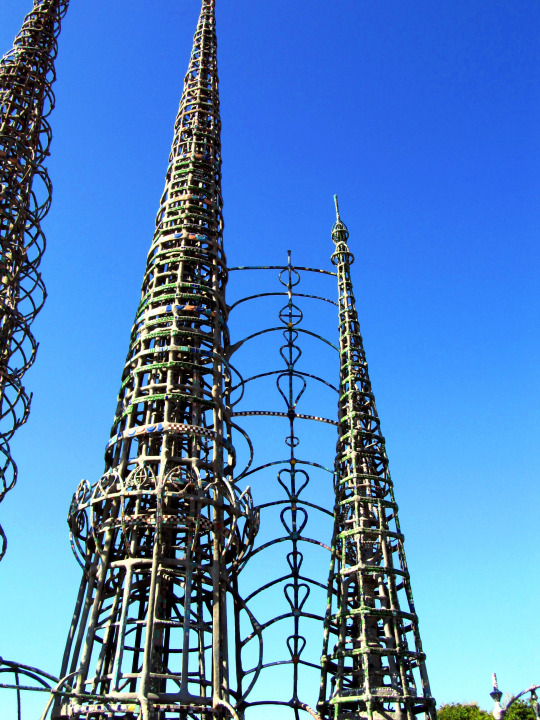





The Watts Riots began in the Watts area of Los Angeles on August 11, 1965.
#Tor Towers of Simon Rodia#Watts Towers#1765 E. 107th Street#Sabato Rodia#Watts Riots#started#11 August 1965#anniversary#US history#travel#USA#summer 2011#LA#Los Angeles#public art#tourist attraction#landmark#mosaic#original photography#vacation#California#West Coast#detail#cityscape#architecture
1 note
·
View note
Text
Lore details I've noticed: Farewell Rayashki event
As always that's mostly Russian/USSR/Slavic stuff and some translations, feel free to add anything. I've also made a post about Silver Knot lore details
Obviosly, spoiler warning
Alenka - a USSR chocolate type produced since 1965, they are quite soft and sweet and still popular among kids and adults

The playground is quite typical for the time period. The drawings and sunflowers might be Vila’s and kids’ work. It’s not very clear if the graffiti is made by someone inspired by hip-hop culture or is August’s failed attempt at scribbling out his name, judging by “А” and “Г” as 1st and 3rd letters. The only thing I’d add here is more scraped parts recycled into playground constructions

Ijirak, Kikituk, Qiqirn - creatures from Inuit folklore (as far as I know they are not known in native Siberian folklore). I haven’t found information about Hoituk
The Russian word for “most” means “best” in the phrase “the most “most”” (“самый-самый”)
“It was only by luck that we found the runium. For over 60 years, people here have worked together to make it what it is now” - Vila. If the events happen in 60s-80s (judging by the overall vibe), than the last time reverse was at 1977 and Rayashki started to grow from a village to a town at 1917 or later. It means the town exported runium for all the Soviet years.
⬆️ EDIT: Silver Knot (Windsong's story) confirms it actually happens in 80s-90s
Most of the sighs say “For Better Future”, “Welcome to Rayashki” and “Welcome Zeno’s Military Institute”

The room in which Windsong stays is Soviet af. There are an old TV with a lens, cool bookshelf and tiles that surprised me. They’re common for public and liminal spaces but not so much for the living ones. Maybe they’re chosen because they endure harsh Artic climate better that wood or linoleum
EDIT: the TV looks like KVN-49 model, produced in 1949—1962

“It must be Kikituk! But their closest habitat should be Kong Kalrs Land, hundreds of kilometres away”. Kong Karls Land - a group of island of Svalbard archipelago, Norway. As @vingler-mirror point out in their post, Rayashki is likely based on Pyramiden town owned by USSR on the same archipelago


Природа это числа и черты - “Nature is numbers and lines” Природа это мозаика цветов - “Nature is a mosaic of colours”
“Mutant Kikituk from Olga area! You should be at the Olga Strait, hunting for migrating salmon and whales, not here!” - excuse me OLGA STRAIT!? THE ONE NEAR JAPAN!?

Poneva/ponyova - an element of Russian (Eastern Slavic?) female clothing worn on top of the main skirt of the dress. I believe there was either a mistranslation in Needles and Loaves message where Raisa said “poneva dress”, either she meant the whole outfit

Samodiva - Their name is feminine and can be roughly translated as “self-wonder”, but that’s another word for vila the creature from Western and Southern Slavic mythology similar to Eastern Slavic rusalka/mavka

Other stuff I’ve noticed:
The town seems to have a big arcanist population, if not most of them are arcanists. An arcanist right is applicable to them and all Vila’s known students are arcanists (if the kids are arcanists, their parents and grandparents are arcanists too)
The people of Rayashki seem to come from different places, and it makes sense with Pyramiden's history (EDIT: the workers were mostly from a western region of Ukraine). Pasono’s first name seems to be obscure and I’ve found only a surname mostly known in America. Patrik’s name is more popular name in other countries, and it make me to believe his ancestors might be foreigners. Bogina’s name comes from Southern Slavic languages
Rayashki is very communistic compared to the rest of USSR. Maybe it’s the town’s history, citizens’ temperament, small town’s size, seclusion and big self sufficiency combined. EDIT: the town's athmosphere conctasts with the period of USSR where people start feel more positive about the world around and capitalism with it
150 notes
·
View notes
Text

Who likes mid-century modern, all original, and orange, orange, orange? This beautiful 1965 MCM in Palm Springs, California has it. 4bds, 5ba, $1.850M.

Take a step back in time when white & gray were not a thing. And, guess what? It comes with the furnishings! I see lots of orange, but the description says that the late owner's favorite color was red.


Perfectly preserved time capsule. Look at those giant candelabras- they could be yours. Notice the bulbs in the ceiling beams.

When you say, "I'll be at the corner bar," you mean you'll be in the living room. Love the fabric on the chairs. Pink & orange are naturals together.

Zoinks! Ornate gold dining table and high-backed crushed velvet chairs. The laminate faux marble on the wall was popular then, too.


Oh, wow, totally original kitchen right down to the appliances and laminate. They sure did love laminate back then. And, how about a ceiling of light?

The fridge is new, but so what, it's off to the side. Look at the niche, place for desk, and the vintage intercom/radio system.

Who wouldn't want an everyday dining room that has a purple ceiling and plush crushed velvet swivel chairs?

This home is so vibrant. It includes a fancy tea cart that looks like Ben Hur's chariot, and the funkiest lamp I've ever seen.

In the primary bedroom, I need the carpet, bed and chair. I always loved canopy beds, but this one is regal and funky at the same time.


What a vanity, and of course, it's not an MCM if it doesn't have a sunken tub made of mosaic tiles.
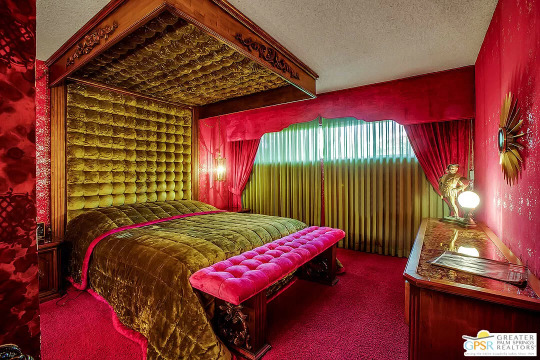

There were no cutting of corners in the secondary bedrooms, either. That canopy must be attached to the ceiling.

Vanity table right in the bedroom. That's what I need.


Interesting bath. There must be storage behind those doors.

Even the smallest bedroom has a canopy bed. Notice the pink Aladdin's lamp on the night stand. Details!

In any true MCM home, there has to be something in Harvest Gold, the most popular color choice.

Cozy basement family room. So comfy looking.

Plus a powder room. Note the door on the left.

Orange cabinetry in the laundry room.


Beautiful patio and pool outside.

A vintage black & white photo proves that it hasn't changed at all.

The .25 acre lot is set against a mountain backdrop.

https://www.zillow.com/homedetails/1240-S-Manzanita-Ave-Palm-Springs-CA-92264/18027905_zpid/
#mid century modern house#MCM architecture#old house dreams#time capsule home#houses#house tours#home tour
181 notes
·
View notes
Text

Not even a quarter of the way through this so-far-excellent book about the history of the DJ and dance music, but its chapter on the UK's Northern Soul movement of the 70s has definitely proven illuminating for me and makes me think about one of the main purposes of this very blog itself. For those who've been following me long enough, you know that my main goal here has been to basically piece together a history of music in a very uniquely fun and granular way by sifting through every V/A compilation and/or DJ mix that I can find that deals with every kind of music that's come out roughly since the dawning of the rock & roll era. Essentially, I find that there can be a certain and inherent level of authenticity to a V/A comp or mix—a pure, artifactual reflection or distillation of a pretty specific moment in time, or conversely, a neat retrospective on some genre, style, or era, presented by selectors who ostensibly have a familiarity with the subject matter at hand. These things make for top-level primary and secondary sources in order to accurately weave all this history together.
But because almost every single piece of music that's ever been recorded either ends up languishing in relative obscurity or suffers the fate of being rendered ephemeral, this blog then naturally becomes a combined project that's committed to digging into the past to find largely unknown gems and to make long forgotten songs remembered again too.
And that's pretty much what Northern Soul itself was all about: finding completely slept-on and disused songs from the past and making them relevant to an appreciative audience in the present. For example, there's no way in hell that we would've ever gotten a new wave/synthpop classic like Soft Cell's "Tainted Love" in 1982—have you ever heard the extended version of it, by the way? It's divine!—had a beloved Northern Soul DJ by the name of Richard Searling not discovered Gloria Jones' full-flopped 1965 original version of it while traveling in the US in the early 70s and then made it a favorite among his own revelers across the pond roughly eight years after its original release. In some northern towns of England that'd been largely unaffected by all the psychedelic hoopla that'd taken hold down south, people hopped up on pills were craving an uptempo brand of American soul from the 60s that they could dance their asses off to instead, and Northern Soul DJs like Searling and others specifically set out to find the rarest quality shit for them to enjoy, like Jones' original version of "Tainted Love."
And so, in a word, my goal here then is to be the Northern Soul of every genre that I myself enjoy listening to, which is a whole lot of music, from rock, to jazz, to funk, to blues, to hip hop, to R&B, to pop, to soul, and to the vast expanse of electronic and dance music whose largely underappreciated levels of boundless creativity consistently drive me wild to no end 🤗. And I'm also here to broaden my own horizons too, of course, by taking chances on things that I very well may not like, but could end up being pleasantly surprised by anyway, which actually happens kind of often!
And it may not seem like all of this is the mission on every single day that I post to this blog, but in the end, it really is, because the most authentic rendering of the history of music cannot be told with just the tracks that flourished; despite all the attention that music's constantly paid, its history still remains vastly untold, and in order to properly tell it, its millions, or maybe even billions, of tiny ephemeral moments that make its ever-expanding mosaic what it is need to have their inches-thick layers of dust blown off.
So like that retired fella who goes to the beach everyday with his metal detector in order to find some cool or perhaps valuable shit, I'm here to do the musical equivalent of that too, like the Northern Soul DJs themselves used to do as well 😎. Some days, or even months, I might get myself caught up in some old and already very popular stuff, but know that the biggest component and raison d'être for this blog is, and will always be, the underground, for the pure and simple fact that virtually almost all music is underground to begin with, and in order to get an accurate portrayal of music's seemingly limitless history, the underground then naturally necessitates the most coverage.
No playlist post from me this week since I've just gotten back from vacation, but hopefully this mini-essay here suffices as a solid replacement.
9 notes
·
View notes
Text
The Valley of Fear: A Dawning Light
Watson must have become famous quickly in canon; this takes place not long after A Study in Scarlet came out!
CW bikini mosaics, derogatory terms for disabilities.
Line break for Roman bikini pictures. This is relevant:
The word dumb-bell is recorded first in 1711 in English, but the concept goes back to ancient Greece. There is even a Roman mosaic from the 4th century demonstrating another thing is older than you think:

Big houses would often have a whole system of bells linked by rope so "downstairs" could see precisely where they were needed. It was a Victorian way of showing off your wealth:
A genius loci was a protective spirit of a place in Roman religion, although the definition was slightly different by Holmes' time:
A reefer jacket was a type worn by sailors when they "reefed" i.e. furled or unfurled sails on a ship; it combined warmth with freedom of movement. It has since become a fashion item:
"Lunatic" was a legal term for someone with sufficient mental illness to require commitment until 1930; it remained in some federal laws in the US until 2012.
"Idiot" was specifically used for those with very profund intellectual disability. For example, someone with Down syndrome would have been called an "idiot"; although John Langdown Down himself called them "mongoloid" because they looked like people from East Asia. That second term and contractions thereof are now considered highly offensive; a major impetus for it going from medical use was when the Mongolian government complained in 1965.
14 notes
·
View notes
Text










The Milan Cathedral is located in Milan, Italy. Construction of the Catholic church began in 1386 by Archbishop Antonio da Saluzzo and Lord of Milan, Gian Galeazzo Visconti, but it didn’t end until 1965. The cathedral was built upon an earlier basilica. Due to the centuries of construction and reconstruction, the cathedral plans took form with major decisions to expand or tweak things made by a team of workers. Even Leonardo da Vinci tried to accomplish the hard task of designing the tiburium (the lantern tower). It has stood guard over Milan for more than 600 years. In 1389, the chief architect Nicolas de Bonaventure wanted the cathedral to be done in the Gothic style; this included the pink marble covering the cathedral exterior, including white spires and pinnacles, 135 gargoyles, and towers holding statues. The cathedral was consecrated by Pope Martine V in 1418, but only the nave was finished. The Duomo remained unfinished for centuries due to a lack of funding. Work on the church’s façade design began at the end of the 16thcentury, but the plan wasn’t completed until the end of the 18th century. Giuseppe Perego sculpted the copper Madonna statue located at the temple’s highest point in 1774, which serves as a symbol of Milan. New work began on the façade in the early 19th century, with most of the spires added to the roof and many stained-glass windows finished. In the 20th century, conservation work was completed, but various phases of restoration continue today. The cathedral has 135 spires, 250 stairs, and 3,400 statues. Inside there are five naves, a transept, forty pillars, an apse, and a choir. The building has the capacity for more than 40,000 people. The cathedral portrays stories of the Bible depicted on stained-glass windows, along with beautiful mosaics and paintings. There’s also a marble staircase, carved floor-to-ceiling statues, a 9th century crypt, beautiful terraces, and the Cathedral Treasure, which houses paleo-Christian and Romanesque objects. The Milan Cathedral is one of the largest Christian churches in the world and the biggest gothic cathedral ever built. It stands 45 meters high and is 157 meters in length.
13 notes
·
View notes
Text
What kind of car Leland Turbo is, why I think he was once/going to be a race car, and why this is objectively the sluttiest looking car
In this essay, I will—
So, right off the bat, this car does not exist :/

It’s a mosaic of features from real cars, but he is not a direct translation of a real car. Our pals over on fandom wiki list his car type as a “1965 Runwell-Type SR” but even they’re like yeah it’s completely made up.
Now, there are some cars that come very close to what Leland looks like. He’s obviously modeled after a c. 1960s Jaguar E-Type. But he doesn’t have a sloped back so that narrows the field down a bit more.

There were hard top convertible e-types in the ‘60s that bare a striking resemblance to our friend, Agent Turbo. And he could certainly be modeled after a car like this, but there’s another Jaguar that I think fits the mold a little better.

There was a jaguar e-type lightweight model that was made in the ‘60s as a race car.

It just feels a bit more solid than the run of the mill e-type and closer to Leland’s stockier silhouette. Of course there’s discrepancies. It doesn’t have the bumper trim pieces (but those were likely spy gadget add-ons anyway), the headlights are slightly different, the hood completely different, and the rear end as well.

(I struggle finding official reference photos of this bastard(affectionate) but we’ll work with what we’ve got) the break lights, center trim pieces, and rear window shape are all completely different from the e-types. I’m not familiar enough with other vehicles of this era to be able to place where those features were taken from or if they’re just made up. But overall, his base frame is the Jaguar, and I think the racing model fits that frame the best, which would also be a fascinating plot point if it had been incorporated into cars 2.
As for my finishing thoughts,

I rest my case.
#my pretentious ramblings#as if I know anything about cars XD#but I’m very proud of my half baked research#shhh I totally know what I’m talking about#cars2renaissance#leland turbo#cars 2 (2011)#cars 2#cars fandom
18 notes
·
View notes
Text

Some pendants/keyrings I’ve made past couple of days.
The left two uses ceramic tiles you can get in mosaics sections of craft stores.
The right two use metal squares I can no longer purchase, but because they were $1 per bag of 40 I have quite a few.
I wish the motel shape was just a bit longer: I could do the 5 thunderbirds on it with the metal as I have all 5 baldric in it (or ceramic as the TOS versions are all covered)…
But I may switch to dog tag shape and use the rest of my blue glitter and do one that was for the RnR race this year.
Ok… so poll and I’ll ensure enough colors for each:
6 notes
·
View notes
Text

Industrial landscape (1965), a mosaic by Zizi Makrisz in the restaurant of the Karancs hotel, Salgótarján, 1973. From the Budapest Municipal Photography Company archive.
39 notes
·
View notes
Text
Some of My Fav WOC Jazz Artists!
As it is officially the last day of Women's History Month, I thought it would be fitting to close it off by giving some of my favorite (and arguably underrated) WOC jazz artists some very well-deserved recognition!
Una Mae Carlisle (born December 26, 1915 – passed November 7, 1956) -

A truly talented jazz pianist, composer, and vocalist that specialized primarily in swing and crooner styles. With her voice highly resonant, leaving behind a lingering sweetness, and careful attention to detail in her piano-playing, Una Mae was not only one of the first WOC jazz composers to have her work end up on billboard charts, but her achievements are parallel to/went beyond the bounds of those other more conscientiously documented jazz performers in the early 20th century.
Discovered by Fats Waller at the young age of 17, Una Mae Carlisle had an early start in the entertainment industry with her true roots being in the little state of Ohio. Despite her early compositions and playing styles being heavily inspired by Waller, starting in the mid-late 1930s and continuing until her passing, Una Mae would go on to have her own solo career outside of touring and recording with him. In turn, she traveled across the states and even made her way throughout Europe and the UK (though eventually returning to the states and settling down in Harlem, New York).
Her achievements spanned from things such as her compositions becoming hits that proceeded to be performed and recorded by other highly-regarded jazz artists such as Ella Fitzgerald, Peggy Lee, Billie Holiday, etc, and taking residencies in big and bustling clubs around the world. She would do work in Paris, London, Amsterdam, and New York where she would appear and perform in several films, and worked alongside record labels such as Capitol Records and Bluebird Records. Eventually, in her later years of life, Una Mae would go on to become the first African-American woman to have her own radio program, named “Agile fingers and a voice that lingers," broadcasting to stations across different parts of the US.
There's a lot that I've left out as I could dedicate an entire essay to her, but please give her a listen and be prepared to feel like you're falling in love.
Teri Lyne Carrington (born August 4, 1965) -

A force to be reckoned with in the world of contemporary jazz, drummer, composer, activist, and educator, Teri Lyne Carrington, in my eyes, is a genuine SUPERHUMAN. She has and continues to breathe new life into the genre and has made significant contributions to expanding what jazz is all about.
As a lifelong musician, Teri Lyne Carrington, started her career as a professionally accounted for jazz artist at the young age of 10 and attended the Berklee College of Music at only 11. Throughout her career, Teri has worked and toured with other big names in jazz such as Cassandra Wilson, Stan Getz, Pharaoh Sanders, Herbie Hancock, and Wayne Shorter, and can also be recognized in other parts of the entertainment industry such as performing on several late night TV shows .
Teri lyne Carrington may also be recognized as the first woman ever to win a Grammy award in the Best Jazz Instrumental Album category. However, she didn't do this just once, but SEVERAL times. She would recieve Grammy's for "The Mosaic Project," "Money Jungle: Provocative in Blue," "Waiting Game," and her most recent album "new STANDARDS vol.1" (LIKE I SAID, A FORCE TO BE RECKONED WITH)
Her artistry is not to be questioned and neither is her character! Teri has made archaic efforts in amplifying the voices of and creating an inclusive, safe, and welcoming space in the jazz world for marginalized groups. LISTEN TO THIS COOL ASS LADY!!!
Melissa Aldana (born December 3, 1988) -

Highly influential and a true master of her craft, Chilean jazz saxophonist, Melissa Aldana, evokes a sort of poetic and soul-touching aura through her playing and does a superb job of not just performing jazz but feeling and speaking jazz.
Melissa got the ball rolling as a professional saxophonist by first playing jazz clubs as a young teen in Santiago, Chile. As she gained traction, she was eventually lead to study at the Berklee College of Music and would then move to New York City post-graduation, and during this time, was under the guidance of other respectable musicians such as Bill Pierce, Greg Osby, and George Coleman.
Outside of her musical education, Melissa Aldana has gone to the lengths of achieving things such as winning Altazor National Arts Award of Chile, being the first female musician, youngest musician, and South American musician to win the Thelonious Monk International Jazz Saxophone Competition, performing in multiple credible jazz festivals around the world, AND has won a Grammy for Best Jazz Performance.
Just like Una Mae Carlisle and Teri Lyne Carrington, Melissa Aldana's work ethic and eagerness to always keep learning and widening her perspectives is more than admirable.
These women make me so excited for the future directions of jazz and the incoming lineage of influential and innovative female jazz performers. As the genre evolves, it is figures like these outstanding women that unfailingly serve as a reminder as to how important women are to the arts and how we will forever stand as symbols of possibility.
Have a beautiful April~
4 notes
·
View notes
Photo










The Watts Riots began in the Watts area of Los Angeles on August 11, 1965.
#Tor Towers of Simon Rodia#Watts Towers#1765 E. 107th Street#Sabato Rodia#Watts Riots#started#11 August 1965#anniversary#US history#travel#USA#summer 2011#LA#Los Angeles#public art#tourist attraction#landmark#mosaic#original photography#vacation#California#West Coast#detail
1 note
·
View note
Text


The transformation of this 1965 Avon trailer is unbelievable.


Isn't this amazing?
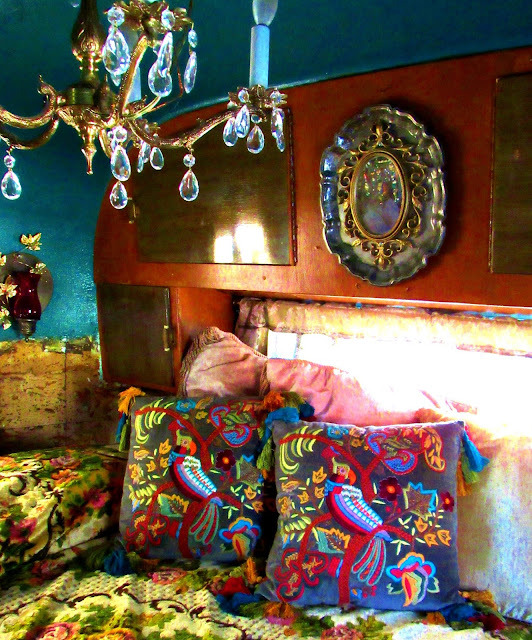
All the colorful accessories.

Storage under the bed.


I'm disappointed, though, that they put in a counter, but no cooktop, sink, or anything.

After stripping the walls, they were either painted over or left in their original state.

The bathroom before the redo.
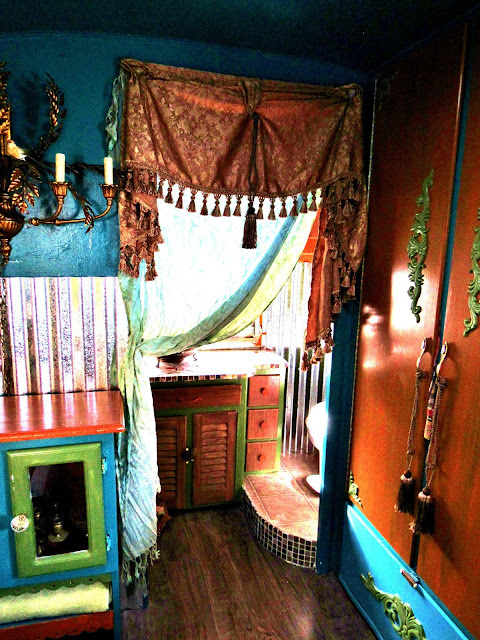
After.

Making a mosaic counter for the sink.


Apparently, it was a choice not to put in a water hookup b/c the trailer is old and was designed to drain the water right on the ground. They will be installing a solar shower and bin underneath to collect the water.


The camper won't be traveling anywhere, it's an adorable retreat or guest space. I'll take it.
128 notes
·
View notes
Text
Singapore's History and Heritage: A Walk Through Time

Nestled at the crossroads of Southeast Asia, Singapore is a city-state with a rich tapestry of history and cultural heritage that dates back centuries. From its humble beginnings as a fishing village to becoming a global economic powerhouse, Singapore has undergone a remarkable transformation. Today, the city-state stands as a testament to the harmonious coexistence of tradition and modernity. While exploring the key milestones that have shaped Singapore's history and heritage, visitors can also indulge in various things to do in Pai and experience the vibrant scene of shopping in Thailand.
Early Days: A Fishing Village to a Trading Hub

Singapore's story begins in the 14th century when it was a mere fishing village known as Temasek. It wasn't until the arrival of Sang Nila Utama, a Sumatran prince, in the 13th century that the island gained prominence. The prince renamed the island "Singapura," which means "Lion City" in Sanskrit after he allegedly spotted a lion on its shores. Although lions never roamed the island, the name stuck, symbolizing strength and courage.
In the 19th century, Singapore's strategic location at the crossroads of major shipping routes attracted the attention of European powers. Sir Stamford Raffles, the founder of modern Singapore, established a British trading post in 1819. This marked the beginning of Singapore's rapid ascent as a crucial trading hub in the region.
Colonial Era and World War II:

Under British colonial rule, Singapore flourished economically, becoming a melting pot of cultures due to its strategic location and open trade policies. However, the prosperity was interrupted during World War II when the Japanese occupied Singapore from 1942 to 1945. The war left an indelible mark on the island, with the Battle of Singapore being a pivotal moment in its history. After the war, Singapore went through a period of recovery and reconstruction.
Independence and Nation-Building:
The desire for self-governance gained momentum in the post-war era, leading to the formation of the People's Action Party (PAP) in 1954. Led by Lee Kuan Yew, the PAP advocated for independence from British rule and social reforms. Singapore achieved self-governance in 1959 and joined the Federation of Malaysia in 1963. However, the union was short-lived, and Singapore gained full independence on August 9, 1965, due to political differences with Malaysia.
Lee Kuan Yew became the first Prime Minister of Singapore and embarked on a nation-building journey characterized by economic development, social cohesion, and multiracial harmony. The transformation was remarkable, turning Singapore from a developing nation into a first-world city-state within a single generation.
Cultural Diversity: Harmony in Diversity

One of the defining features of Singapore is its multicultural society. The island is a mosaic of different ethnicities, including Chinese, Malay, Indian, and various other communities. This diversity is not only evident in the population but also in the architecture, cuisine, and traditions that permeate the city.
Chinatown, Little India, and Kampong Glam are iconic districts that showcase the cultural richness of their respective communities. Visitors can explore the vibrant markets, temples, mosques, and churches, experiencing firsthand the harmonious coexistence of different faiths and traditions. The annual celebrations of festivals such as Chinese New Year, Deepavali, Hari Raya Puasa, and Christmas further highlight the multicultural tapestry of Singapore.
Preserving Heritage: Museums and Historic Sites

To truly understand Singapore's history and heritage, a visit to its museums and historic sites is essential. The National Museum of Singapore provides a comprehensive overview of the island's past through interactive exhibits and artifacts. Fort Canning Park, with its archaeological sites and lush greenery, offers a glimpse into Singapore's colonial history.
Changi Chapel and Museum pay homage to the prisoners of war during World War II, while the Peranakan Museum celebrates the unique Peranakan culture, born from the intermingling of Chinese and Malay influences. These sites not only preserve the historical significance but also serve as educational platforms for future generations.
Modern Singapore: A Global City-State

In the latter half of the 20th century, Singapore transitioned from a trading post to a global economic powerhouse. Its commitment to education, innovation, and infrastructure development propelled the nation into the ranks of the world's most developed countries. The skyline of Singapore reflects its modernity, with iconic structures like the Marina Bay Sands and Gardens by the Bay becoming symbols of the city-state's progress.
Conclusion:
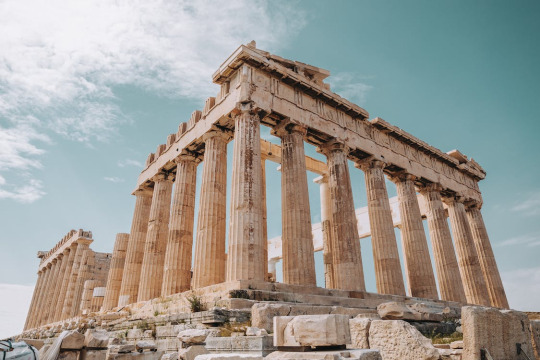
Singapore's history and heritage are intertwined with resilience, diversity, and a forward-looking spirit. As visitors traverse the city-state, they embark on a journey through time, witnessing the transformation from a humble fishing village to a global metropolis. Singapore's ability to preserve its cultural roots while embracing progress serves as an inspiration for nations worldwide. A walk through the Lion City is not just a stroll through its bustling streets but a fascinating exploration of a nation's evolution, where history and heritage seamlessly coalesce.
#Singapore History#Cultural Heritage#Lion City#Southeast Asian History#Colonial Era#Independence#Nation-Building#Multicultural Society#Chinatown#Little India#Kampong Glam#Museums in Singapore#National Museum#Fort Canning Park#World War II History#Changi Chapel and Museum#Peranakan Culture#Modern Singapore#Global City-State#Marina Bay Sands
3 notes
·
View notes
Photo

Dear all, We are happy to announce that ”Socialist Modernism in Germany”, the second photo album of @_BA_CU 's planned series, is available in a second publication in 800 copies. The photo album includes landmarks of socialist modernist architecture in Germany – from 1955 to 1990. Those who are interested in #SocialistModernism are able to order the book on @UrbanicaGroup @ushopamazon 👈🏻🚚distributor page, (Link in our profile) ; link: http://urbanicagroup.ro/ushop/ or AMAZON: https://www.amazon.com/s?me=A33QJE9SPOCVM4&marketplaceID=ATVPDKIKX0DER by selecting the Photo album from among the books listed. (Shipping worldwide) #SocialistModernism #_BA_CU B.A.C.U. Association explains socialist modernist tendencies, it presents – in color photographs – a functional image of the buildings and their often original elements that synthesize local culture and traditions, while bringing you up to date with their current state of conservation. The 71 landmarks included in this volume have been organized by function, into five sections. The book contains the authors’ view on Eastern German modernist architecture. Print run 800 Pages 194+ 1 Spread/ GERMANY-SOC MOD Map German and English Size 26×28.5 cm Weight 1.25 kg Designed and published by @_BA_CU Association 1st Centrum Warenhaus, Lausitzer Platz, Bautzner Allee, Hoyerswerda-Neustadt, 1965-69. Aluminum elements were designed by Harry Müller. 2 House of Mining and Energy Workers, now Lausitz Halle, Hoyerswerda, 1977-84, architect: Jens Ebert mosaic wall by Fritz Eisel (1983/84) 3 Neues Gewandhaus, Augustusplatz, Leipzig 1977 - 81. Architect Rudolf Skoda, Eberhard Göschel, Volker Sieg, Winfried Sziegoleit 5 New wing of the former Stasi headquarters building. Leipzig, 1970s 7 Stadthalle Chemnitz, Chemnitz (formerly Karl-Marx Stadt) 1969 and 1974, architect Rudolf White, Hubert Schiefelbein 9: Housing building, Lusan neighbourhood, Gera, Mural by artist: Guenter Kerzig with Peter Kraft 10: Centrum Warenhaus/Karstadt, Magdeburg, 1970–1973, Architect: Karl-Ernst, Anne-Monika Zorn (c) BACU https://www.instagram.com/p/CgcPF26MuKQ/?igshid=NGJjMDIxMWI=
4 notes
·
View notes
Text
Epilogue
Where are they now > End Credits
Dead & Company. “Knockin’ on Heaven’s Door > Not Fade Away,” 16 May 2024, Sphere, Las Vegas.
[This is supposed to be like the part in movies where they say what happens to the characters in the future. The written descriptions are to be accompanied by grainy, sepia-toned film footage. Starting with Billy, at Rockland riding his mini bike.]
Wilhelm Wolff III
“Billy”
He didn’t get sent to Wilderness Renewals after all. Rather, his mother agreed to a compromise, that he be enrolled in graduate school. He is currently pursuing his Masters of Business Administration, in year-three of a two year program.
Ooh, Ooh (2x)
[Raj, intensely focused with a blunt resting on his lip, while he types away on a laptop.]
Rajit Patel
“Yayo-L”
As part of his binding non-disclosure agreement spanning the length of his friendship with Billy, which through it all remains ongoing, Raj received a lucrative incentive package from the Wolffenbeir Company, which following the collapse of the merger agreement with GloBev, likewise remains a going concern. In addition to receiving a considerable lump sum in the form of an annual bonus, Raj was set on a fastrack for promotion, taking Billy’s spot in the vaunted Rotational Leadership Program. He is now a Vice President of Information Security.
Mama take this badge off of me
[Mister X posing for a photo-op with Doctor Goodlove, giddily shaking his paw.]
Name unknown
“Mister X”
Thwarted in his dogged pursuit of Doctor Goodlove, Mister X settled for his backup plan for world domination, representing Globev in their acquisition of the Kraft Heinz Corporation. In hindsight, he may have been lucky to strike out with Wolffenbeir, on account of how the broader stable of brands at KH has provided the opportunity to build an extended content universe around these beloved products and characters. Of course, they are anchored around the singularly iconic Kool-Aid Man, who has emerged as something of a demigod-like figure in Asia, inspiring a truly zealous fervor among a legion of devoted followers the continent over. Presently Mister X has him preparing for a viral stunt, a la Evel Knievel, but with a key twist. Rather than jumping over some obstacle or void on a motorcycle, he will drive the Oscar Meyer Weiner Mobile, fueled by a jet engine converted to run on Velveeta cheese, directly through the famed Badaling section of the Great Wall of China. Already, all throughout Tiananmen Square, children chant his famous catchphrase: 哦,是的.
I can’t use it anymore
[B-roll of wooks dancing.]
The Grateful Dead/Phish
In modern life, we spend so much of our precious time staring at screens. Computer, phone, television. Everywhere we look, here’s a screen. There’s a screen. It’s gotten to the point that the term Screen Time has entered the lexicon, even securing coveted honours as Webster’s Dictionary’s Word of the Year in 2012.
You may even be reading this sentence on a screen right now. But do you even know screens work?
(Pinky promise this’ll be, like, the last one of these. So enjoy it.)
Perhaps you’re familiar with the term, pixel. It was coined in 1965, referring to images being transmitted from the Moon via space probes back to Planet Earth. Etymologically it’s evolved to mean the individual units that make up a picture. Put simply, digital images are made up of a mosaic of pixels, and the more pixels there are, the higher resolution the image. Say for example your television is 1080p. That means the height of your screen is 1,080 pixels tall.
Now every cotten-picking one of those pixels is divided into three sub-pixels. Each of those is occupied by a single colour. Red, Blue or Green. They are, of course, the three primary colors of light.
How a screen works, talking in layman’s terms here, is all those hundreds upon thousands of pixels get blurred together. So that rather than just those three colors, you can blend them all together — like Bob Ross on his palette — to create millions of colors. And then if you stand back a little, you the viewer can see those colors formed into pictures. It’s a little like those old optical illusion posters, in that regard. Magic Eye, they’re called.
After Jerry died, the surviving band members reunited with one another intermittently over the years. There was a handful of incarnations. The Dead (drop the Grateful), Furthur and The Other Ones, among some others. A murderer’s row of otherworldly talented musicians sat in with them on those tours. Susan Tedeschi, Warren Haynes, Joan Osborne. Obviously, although they played his guitar parts and sang his lead vocals, they never deigned to fill the Jerry-sized void on stage.
On the contrary, despite Garcia’s staunch insistence that the Grateful Dead were a captainless ship of fools, a power vacuum nonetheless formed in his stead, wherein the longstanding sibling rivalry between Phil and Bobby festered into something of a Cold War. As the twenty-year anniversary of their comrade’s passing approached, not only did a commemorative reunion portend unlikely, the Dead seemed headed for a more permanent uncoupling indeed.
That was until at the Eleventh Hour, when a New York-based music promoter by the name of Peter Shapiro — whom many consider to be the spiritual heir to Bill Graham — intervened on fate’s behalf. Between Lesh and Weir, he negotiated a detente, signing the group for a three-show Fourth of July-weekend run, to take place at the site of Jerry’s final performance with the band: Soldier Field in Chicago. Fare Thee Well, as it would be known. And to the untold delight of burnouts the world over, Shapiro lasso’d a very special guest indeed for the albeit unenviable task of assuming Jerry’s mantle: Trey Anastasio of the band Phish. For a universe of music that is so thoroughly steeped in Lore, this was akin to a great prince — the Prince Who Was Promised — taking up the banner of a fallen king.
FWIW, some heads derided FTW as a blatant cash grab. They did after all gross 50 mill US. Not bad for five-nights’ work. (Two warm-up gigs were added at Levi’s Stadium, the recent replacement for Candlestick Park as the home of the San Francisco Forty-Niners, despite being a 45-mintue drive with no traffic away from San Francisco, in the master bedroom community of Santa Clara.) Nonetheless, the consensus was that they made for a fitting tribute and a hell of a fun time, and that Anastasio acquitted himself well. Even if he did sound like Trey Doing Jerry, that he could shred, no one would sure deny.
Given the beef between Phil and Bob, as well as the fact that the boys were now all elderly men, everybody assumed that would be it. They would all go their separate ways. End on a high note. Go out with a bang.
Ah, but did you see the part where I said how much fucking money they made? Fifty, million, dollars, US. In the biz they call that Proof of Concept. Or in other words, when the gravy train is rolling, you better keep laying down track. And so they did. As for Lesh’s claim to the throne, well there was a simple solution. Sayonara! You can fuck right off to Phil and Friends. (What some consider to be the finest configuration of the post-Dead milieu.) We can get any asshole to play bass. Ah, but then, who do we get to play Jerry? Trey would be great, but he’s a non-starter. Not only does he have his own thing going — some consider the Summer ‘15 tour to have been the pinnacle of the 3.0 period, and attribute Anastasio’s time spent practicing the Dead repertoire to sparking something within him — but he would consider the very notion of serving as Jerry’s understudy, in any other context than a commemorative one-off like FTW, offensive. He’s gone on record to that effect. Without Jerry, it’s just nostalgia, he says. Enjoy it all you want, but that’s the truth.
(There also persists a fan theory, albeit uncorroborated, that Bobby felt a bit upstaged by Trey. Specifically on night two of Santa Clara during Hell in a Bucket, there’s video evidence of Anastasio ripping a solo whilst Weir attempts to signal him to wrap it up, and appears visibly frustrated in so doing.)
Little did Trey know, while he was up on stage, laying waste to HIAB, there was a man in the audience, waiting in the wings to volunteer himself as tribute. Mother F-ing John Mayer.
This could get contentious, so let’s all take a moment to pause, and remember that we’re all friends here.
[Exaggerated coughing a la PSH in ACP.]
Like so many public figures today, John Mayer is a divisive force in our culture. But I’m here to tell you that he needn’t be. When you strip away the special interests and their focus grouped talking points, it’s actually all pretty cut and dry. Here is the common sense position on what John Mayer is.
A massive tool.
Now obviously it’s more complicated than just that. For a fact, there are many descriptors for what he is — a blowhard, a clout chaser, a star fucker, a fuccboi, a lightweight, a dilettante, a culture vulture, a hypebeast and perhaps, above all, a poseur — and all of them are accurate in their own way. In a vacuum, however, none of that necessarily matters. Because the world’s full of rich and famous douchebags. Rather, for the purposes of this exercise, since he has inserted himself into the broader discourse surrounding the Grateful Dead, the only relevant metric is how he measure up to Jerry.
Spoiler alert: he fucking doesn’t, but let’s play it out for the sake of argument. Jerry was himself a lot of things. A banjo picker, a guitar player, a filmmaker, a painter, an underrated singer and avid scuba diver. By no means was he virtuosic in all of those pursuits, nor especially was he always such a nice guy, nor even all that enlightened a cat. (Just ask the women in his life, recalling his bromance with the Hells Angels. Or better yet, ask him about his aforementioned opinion on hip hop.) But, above all else he was one thing: An Artist. With a capital A.
John Mayer may make things. But those things are not art. They are products. John Mayer is not an artist. He is a bull shit artist. Morever, John Mayer is the Anti-Jerry.
A lot of genuinely well-meaning albeit woefully misinformed people are reading this and to themselves saying, say what?! They might even acknowledge his past, shall we say, indiscretions — more on those in a bit — before they’ll inevitably say something like, but one can’t deny he’s one of — if not the — best modern guitar players.
Yes, one can.
That’s not to say he isn’t technically skilled. He is. Indeed quite so. Particularly as a mimic. He can and does play all the greats’ riffs. But to that I say, so what?
Here. Think of it this way. If you live in a major metropolitan area, there’s a guy playing in a bar Tonite who is as technically skilled as John Mayer. Is that city that you live in Nashville or Los Angeles? Maybe even Chicago or Austin? Then it’s likely several guys. That’s just the facts.
(Obama voice: Let me be clear. That’s not to shit on guys that play in bars. Or even necessarily Mayer. They’re fucking sick at guitar. That rules. But it’s not like, divinely ordained, or anything.)
The difference between those guys and John is that the latter is a Pop Star. Always has been. His defenders would no doubt quibble with that designation, but just look at the guy’s discography. His major label debut, Room for Squares, peaked at number eight on the Billboard Chart. Every subsequent release of his thereafter has charted either No. 1 or No. 2. For the sake of comparison, let’s look at the Grateful Dead, arguably the Great American Band. (Go on, then. Who’s better? Beach Boys? Eh, maybe. But if we’re being real, it’s Brian Wilson and a bunch of guys. Allman Bros? Sadly, too short of a window. Van Halen or GnR? Too eighties. Nineties’ nominee would probably be Nirvana, but they had the same problem as the Allmans. As for the 2000s, it’s slim pickins. RHCP? FOTH. [E-Street and the Heartbreakers are disqualified, on account of they’re technically support acts. The Band on the other hand would be considered eligible, despite being more than half Canadian. I don’t make the rules.]) How many of their 13 studio albums would you guess were bonafide hits, cracking the Billboard Top Ten? One. Uno. Eins. In the Dark. Their penultimate effort, and FWIW, widely considered among Deadheads to constitute somewhat of a sellout. To the extent that the term In the Darkers has emerged as a pejorative for the yuppy, bandwagon fans of the late eighties. The Johnny Come Lateleys. (Looking at you, Tucker Carlson, you fucking evil piece of shit. Hope you die.)
But even that’s not to pop Mayer for being popular. That’s also fine! There’s nothing wrong with pop music, necessarily. But for our boy Johnny, you see, pop stardom and all its trappings, that wasn’t enough for him. Thus, and perhaps this was a calculated effort to avoid the pitfalls of one-hit-wonderdom, Mayer was always savvily self-branded as something more. A singer-songwriter. And it didn’t matter that there are lots of pop stars who write their own songs, nor that his compositions were cotton candy, bubblegum pablum. (See Your Body is a Wonderland, Daughters and Waiting on the World to Change — an anti-protest anthem and apathetic rallying cry for maintaining the status quo — for his greatest offenses against the adult contemporary canon.) Also, and arguably more importantly for the purposes of our argument, the notion was perpetuated through in popular media that he was a virtuosic guitar player. And by virtue of the fact that he played an instrument at all — something most pop stars do not, on account of their being too busy dancing — the bar for this was set quite low. Therefore, through playing up aspects of his resume, namely that he attended to the prestigious Berklee College of Music (nevermind that he dropped out after two semesters … perhaps the only chill thing about him), the John Mayer Industrial Complex was able to construct this myth around him, and fool all you fine people into thinking he was ever anything more than a more approachable, watered down Dave Matthews. Yeah, I know.
(JM and DM have similar vocal affects, although the latter employs his to better effect. There are elements of breathiness and frat bro vocal fry at play in both their phrasings, but ultimately it’s a quality of a counter-melodic, call it, anti-singing. As if they’re both trying to Sing Funny, perhaps as some crude self-defense mechanism propped up against the otherwise unapologetic cringiness of their lyrical output. Specifically in Matthews’ case, it manifests in him sort of doing Adam Sandler thing. Eh-scooby-doo. Ah-la-di-dee. Zippity-doo-dah. It’s actually kind of playful. Mayer, for his part, just sounds whiny.)
And wouldn’t you know that it fucking worked. Mayer was put on a pedestal of his own erecting. Basking in the glow of his critical acclaim as a solo act, he even went so far as to launch a side project called the John Mayer Trio (Lol), a seemingly simple branding tweak that nonetheless runneth overfloweth with plutonium grade pretentiousness. It’s not quite but close to Justin Bieber getting two other guys and calling themselves the Justin Bieber Experience. Or like if it were called, The Rock: A Film by Michael Bay.
But people ate that shit up, too. And to further bolster his shred cred, he’d appear alongside luminaries such as B.B. King and Eric Clapton at various award shows and benefit concerts to Jam. The latter — an on-the-record racist dickhead and all-time bad friend … seriously, what kind of wanker writes a song … sorry, multiple song-s … mother fucking rock ballads … about another man’s wife … not cool, dude — even co-signed him as a modern Guitar God, which we’ve hopefully by now well established is Not Actually a Thing.
Lo, but even a false apotheosis wouldn’t satiate his unquenchable thirst. So then he became a sex symbol, to boot! The Bad Boy of Easy Listening. (Sidebar: this is another thing he does. The greatest trick the Devil ever pulled was pretending to be self-deprecating about his shortcomings. This is Mayer’s gambit to a tee. He even titled one of his latter works, Sob Rock, as if to poke fun at himself. Haha. Don’t fall for it. I assure you, this man is deadly serious.) And full credit to him, he banged a lot of turn-of-the-century celebrity babes. Jennifer Aniston, Jennifer Love Hewitt, Katy Perry, Taylor Swift. Whoa, dude! Save some poon for the rest of us!
(Those are some hot famous ladies, no doubt about it. Mayer, on the other hand, while by no means ugly according to modern beauty standards, is also nobody’s idea of a male model. Particularly as he matures, he’s got the problem a lot of middle-aged rock stars have of increasingly looking like a lesbian. Older men with longer than average-length hair suffer this affliction in general. It’s one of the few advantages of male pattern baldness.)
Ah, but as we all know, pride and getting crazy amounts of pussy comes before the fall. Thusly he was among the first intrepid pricks of the post-Weinstein/Cosby paradigm to be Cancelled, and all for the sin of trying to be funny and play up his reputation as an irreverent provocateur, saying some bullshit to Playboy Magazine of all publications in the year of our lord 2010 about how sick it was to fuck Jessica Simpson, while also adding, apropos of nothing, that he wasn’t into black chicks. Okay. (On the topic of Playboy, the Grateful Dead infamously appeared on their short-lived television variety show in the sixties, and as legend has it, they dosed the entire production crew and studio audience with acid-laced coffee. Now, That’s Funny.)
But since Cancellation was then as it remains, also Not Actually a Real Thing, in the end it only served to bolster the Myth of Mayer, wherein the act of his saying on the record that he had a white supremacist penis became all but the brief abyss in his longer-arcing hero’s journey. Following the now tried and true playbook, he entered a brief period of self-imposed exile, as he later recounted in breathless detail on the Ellen Degeneres Show, during which he bought a ranch in Montana, probably off some multi-generation dirt farmer who couldn’t afford the skyrocketing property taxes what for the encroachment of wannabe cowboy wads the likes of John Mayer. He also got sober, as he recounted in a separate interview — a possible explanation for his staying power is that Mayer has in many ways thrown a life preserver out to late-stage legacy media, being as he is a last bastion for cheap clicks — after drunkenly embarrassing himself at Drake’s 30th birthday party. (Humblebrag! Shout out @twittels, our tour guide to the cosmos. Sorry.) And finally, as to consummate his reputational pivot, he put out an accompanying record named Paradise Valley after the place in Montana he ruined by moving to. The material on said release is wholly immaterial — likely your standard fare, second-term Obama-era Americana. The album art, however, is a work of art in its own right. There’s Little Johnny Mayer, born of Fairfield County, Connecticut, transplanted to Paradise Lost Valley, standing in a stupid meadow with a MILF-hunting dog that if it ever was his to begin with, he one hundred percent put up for adoption within weeks of this photo being taken, staring wantonly up at him as if to say, please … pay any attention to me, whatsoever, whilst he himself heroically resists the gravitational pull of the camera’s lens to stare vacantly off into the middle distance, his brow furrowed under the cartoonishly wide brim of a Big Dumb Hat, paired with what looks to be a poncho or a hopefully smallpox-laced blanket, itself covering no less than five additional layers of flannels, twills, corduroys and any or all other manner of stolen valor workwear fabrics, including denim if you count his pre-distressed jeans that probably cost more than your entire wardrobe combined. (This is kind of a clunky analogy, and typically I would say Car here, but in all fairness to Johnny-boy that’s probably a reach. I’d venture to guess these one pair of pants ran him in the ballpark of $500 to $1,000, though. So depending on the blue book value of your vehicle, or certainly mine, maybe not all that far off after all.) And to tie the ensemble all together, he’s accessorizing with what’s known as a Squash Blossom, a Native American necklace often smithed of sterling silver and inlaid with turquoise to signify wealth and status as it was worn by elder members of the Navajo and other tribes of the American Southwest, which for those geography buffs at home is nowhere fucking near Montana, not that it matters but still.
While Paradise Valley was commercially viable — peaking at No. 2 on the Billboard 200 — Mayer admitted in an interview with his dear friend, the reality television impresario and cultural slumlord Andy Cohen, that it’s his least favourite of his personal oeuvre. Perhaps on account of it was the first of his releases not to receive a Grammy nod. (A seven-time winner and nineteen[!]-time nominee, he’s something of a Recording Academy darling. The Grateful Dead, on the other hand, despite amassing a grand total of zero nominations over their illustrious career, were nonetheless honoured with a life-time achievement Grammy in 2007.) Reckon that’s when decided to cut his losses and latch on to the wellspring teat of the Dead Industrial Complex. Rather though he claims it was a moment some years prior when the song Althea magically appeared on his algorithmically-generated music feed, when he became a Deadhead. How’s that for a meet-cute?
And by some stroke of Faustian good fortune, Mayer and the surviving members happened to share representation. One Irving Azoff, a titan of the recording industry in his capacities as a one-time major label head for MCA and Warner, the former C.E.O. of Ticketmaster and manger to Rock and Roll royalty, including U2, Bon Jovi and Steely Dan. Azoff’s longest-standing client of more than forty years, Don Henley of the Eagles — himself widely known to be an exceptional asshole — once described him by saying that he may be Satan, but he’s our Satan. (Azoff perhaps more than any other individual is responsible for the consolidation of the music industry at the expense of all fans, most musicians and really anyone other than Irving Azoff, and by extension his clients. Insofar as he presided over the merger between Ticketmaster and Live Nation, effectively monopolizing live entertainment through the vertical integration of things like ticket brokering and artist management and venue ownership. All Don Henley’s jokes aside, it’s true that the music industry is chock-full of shall-we-say colourful characters guided by dubious moral compasses. Bill Graham is a prime example, and even he wasn’t without his charms. Irving Azoff, meanwhile, is a reprobate without peer. A true villain amongst petty crooks.) As soon as the contracts were signed presumably in blood, John and the boys, newly christened as Dead & Company — itself a perfect moniker of incorporation if there ever was one — hit the road. And in defiance of the laws of time, they’ve toured off and on for seven years, culminating in this latest run of shows at The Sphere.
A Domus Aurea for the modern day, The Sphere is the wet fever dream-cum to life of James Dolan (Azoff’s partner), a beastly little man who fans of his two previously most high profile assets, the New York Knicks and Rangers, can attest is as close as we currently have to an American Nero. Long since considered a punch line among his billionaire buddies, The Sphere is his attempt to once and for all prove the haters wrong, and in his own words, Reinvent Live Entertainment. And according to some, this Ewok-looking mother fucker may have just pulled it off. Those who have made the pilgrimage to The Sphere — if they ever do return — will regale you of its majesty. They’ll show you cell phone videos of its massive LED display. (A screen on a screen.) It was a life-changing experience, they’ll proselytize unto thee. But The Sphere can’t be understood by second-hand accounts. Nor either by seeing it in person. It’s simply too overwhelming to put into words. Like so much about our lives tday, it can only be truly grasped as a set of numbers. A linear regression of statistics.
2.3 billion — USD, what it cost to erect
366 x 516 — dimensions measured in feet
1.2 million — lights in the 580,000 square-foot exosphere, each about the size of a hockey puck and containing a cluster of 48 LEDS
650,000 — approximate dollar amount spent to advertise on the exosphere’s surface with a 90-second advertisement running for a single week leading up to the presidential election by the Kamala Harris campaign
312 to 226 — Harris’s electoral vote margin of defeat to her opponent Donald Trump
34 — felony counts on which Donald Trump had been convicted mere months prior
5 — Auras, the brand name of a humanoid robot, stationed throughout The Sphere’s grand atrium as proto-tour guides tasked with greeting guests, answering questions about the experience and in some instances even making jokes or flirting
256 million — pixels in the theater’s interior screen, the main attraction, the highest resolution in history, measuring 160,000 square feet, or 20x the size of a standard IMAX
60 — gigabytes of data it requires to film one second of content on Big Sky, The Sphere’s 316 mega-pixel proprietary camera system (images captured on normal cameras would only fill a fraction of the screen, so they tried welding 11 cameras together … when that didn’t work they just invented their own)
12 — the minimum amount of people it takes to operate the Big Sky camera system
10 — the number of patents protecting Big Sky
120 — frames per second seen on its 18K film
165 — degrees of view proffered on it’s 1ft-wide lens
10,000 — haptic seats that use infrasound and moving-magnet technology to create a 4D experience
167,000 — speakers, 8 per audience member, in its German-engineered sound system
Perhaps that last stat bears particular significance. These are after all concerts, aren’t they? For a fact, the system is said to be so advanced, that they can project distinct sounds to each individual seat. So presumably you could be listening to four octogenarian musicians and a 30-something glorified influencer play Mississippi Half Step in one seat, whilst the person next to you is listening to Harry Potter: The Prisoner of Azkaban on audiobook, in Finnish. It’s comforting to know that even in this massive bubble, protected by the unrelenting heat of the desert outside — did I mention The Sphere is in Las Vegas … and reportedly coming soon to the Kingdom of Saudi Arabia! — we can remain comfortably in our own individual bubbles.
And speaking of bubbles:
500 million — dollar loss accrued by The Sphere in its first fiscal year of production
But don’t you worry about that. Keep your eyes on the screen. It’s starting. The opening image is an easter egg homage to the Wall of Sound, which you’ll recall was the massive tower of speakers built for the band in the early seventies by Owsley “Bear” Stanley, the prolific LSD dealer.
In the thereafter the big fancy light show shuffles through all the other Dead iconography. Roses and Skulls. Lightning bolts and tie-dye rainbows. Dancing bears and banjo-picking turtles. Motorcycles and busses.
Alright, now we’ve reached the end of the show. It’s well past these old farts’ bedtimes, and Mayer’s got a private jet to catch back to fucking Montana.
The encore begins with a satellite image of The Earth, our dying planet. We’re facing the Western Hemisphere, where dawn has just broken about perpendicular to the San Andreas Fault. Slowly we start zooming in toward Northern California, as the band starts in on KOHD. This is not a fast song as it was originally recorded, but the boys are playing it even slower still. Dead & Slow, as they’re somewhat affectionately known.
The closer we get, we can start to make out the dramatic topography of the Pacific Coast. Yeah, now we’re entering our atmosphere. There’s the Bay beginning to take shape. Up at the top of your screens is where the guys currently reside, in posh Marin County. The bandstand itself is but a small plateau, right below downtown San Francisco, now the world’s largest open-air toilet, where human suffering is on full display, although you can’t quite make it out on this screen.
Bobby bobbles his way through the first verse and chorus, doing some of his trademark scatting, somehow turning Door into a four-syllable word.
Hey, there’s Alcatraz. And now it’s time for a John Mayer solo. Resist the urge to leap off the Golden Gate Bridge. In all its myriad meanderings of bends and slides and pedal effects, it insists upon itself in a way that a Jerry break never did. Maybe it’s because Garcia’s improvisational influences cut such a wide swath, into bluegrass and jazz. Bill Monroe and John Coltraine. Somewhere between them he found himself. The way his stubby fingers seem to pirouette along the fretboard. Mayer, meanwhile, who fancies himself more of a straight-ahead Blues Brother, came up idolosing Stevie Ray Vaughn. Which is to say that his style, such as he has one, is already a photocopy of a photocopy. (Mind you, Garcia was by no means a stanger to the blues genre. It’s how he and Pigpen bonded upon their meeting. [They were the first two members to so converge.] Jerry particularly dug Big Bill Broonzy.) What you can’t hear over his ostentatious tone, you can just as well see right in his ofay face, contorting so, as he painstakingly tries to squeeze out the notes through a century of cognitive dissonance as if blood through a stone. Or it could be just that his fretting hand is weighed down by his full sleeve of traditional Japanese tattoos, or perhaps his wristwatch—
180,000 — dollars, the appraised value of John’s — ahem — Timepiece, a one-of-one special edition made in commemoration of his debut at The Sphere by Audimars Pigeon, the Swiss luxury brand for which Mayer has recently been named Creative Conduit (gasp), presumably a purely ceremonial title conferred in recognition of his well-known passion for horology as well as his prolificacy as private collector, which he put on display in a viral interview with the watch blog, Hodinkee, that you should stop reading this right now and YouTube if for some reason you want to know what it felt like to be a French peasant in the 1780s, taking a shit on the Champs-Élysées, as Mary Antionette strolls by in a gilded carriage, her olfactory so overwhelmed by her beloved perfumes, that she couldn’t even deign to be disgusted by your stench And gravity pulls us closer still. There are the famous Streets of San Francisco, ascending and descending like the stairs in that one famous painting. Two in particular come into focus. Haight and Ashbury. The epicenter of the hippie movement. And now the slate roofs of the Victorian-style houses. Most of them were reduced to rubble in the 1906 Earthquake that killed 3,000 people and destroyed 80% of the city. Except for a fortunate few historic landmarks. The famous Painted Ladies. The Full House house. And the one we see now.
710 Ashbury Street
For the uninitiated, this is considered to be the spiritual home of the Grateful Dead. It’s where all five original members cohabitated for an albeit short period of time. They started as the Warlocks, a jug band gigging in the basement of a pizza parlor. After that they were the house band for the Acid Tests. But then at 710, they became The Grateful Dead. Houseguests included a whose-who of the San Francisco Scene, which looms larger in the American memory than it ever lasted in real life. In reality, it was only a couple years. More like eighteen months. (Larry McMurtry might compare the sixties counterculture to the quote-un-quote Old West, in that regard, which he characterized to be the Phantom Limb of the American cultural consciousness or something.) In addition to hosting their acid rock contemporaries, the Airplaine, Quicksilver Messaging Service, Big Brother and the Holding Company and Janis Joplin, 710 functioned as a sort of Salon, wherein members of thought-leading countercultural organisations would exchange ideas and bodily fluids. Among them were the Merry Pranksters and the Hells Angels, who you might’ve heard of, as well as the Diggers, of whom you probably haven’t. A group of mostly actors, since disenchanted with the limited capacity to affect social change through experimental street theater, the Diggers became what they called Life Actors, insofar as they Lived their Art, the central theme of which was always Freedom. Not so much Freedom in the way it’s been co-opted to mean by maleficent forces in the present day United States, as in the Freedom To Have or Do Whatever I Want As Well As The Freedom To Refuse To Do Anything I Don’t Want To Do. Rather the Diggers’ vision of freedom was somewhat higher-minded. Specifically, they proffered Freedom From Money and Freedom From Fame, the latter of which was interpreted to be anonymity, hence how come they all went by the alias George Metesky, the namesake a man who has suffered a severely debilitating on-the-job injury, had his worker’s comp claims were denied by his employer, Con Edison, the electric utility of New York and went on a bombing campaign of Manhattan, targeting such historic landmarks as Penn Station, Radio City Music Hall, Grand Central Terminal and the New York Public Library.
The Diggers were most known for their free food program. To be fed, patrons were only required to step through a colossal empty frame, not unlike the ones often erected at music festivals for wristbanded attendees to take pictures inside. The Diggers called theirs a Frame of Reference, on account of if you put a frame on something, it’s art, as the great avant-garde composer John Cage once said. When the Diggers Emmet Grogan and Peter Berg visited 710, they threw down a proverbial gauntlet of sorts for the Grateful Dead, according to the band’s official biographer Dennis McNally. We do our experimental street theatre for free. So, how about you play your music for free, pussies?
And so they did. Played public concerts, that is, hooked up to a generator on the back of a flatbed truck, at the Panhandle near Golden Gate Park, where the Diggers distributed their gratis grub. Thereafter they branched out, playing free shows in support of like-minded causes across the country. At Columbia University in support of a student strike, and at San Quentin Prison in support of an inmate strike, just to name two. Per McNally, the act of giving away the fruits of their labour became a part of their DNA, as a band. Hence the laissez-faire attitude toward tapers, etcetera.
But then again, all good things … it was only a matter of time until the whole San Francisco Scene spun out of control. The Haight became overcrowded, what with runaways from all over descending on the place like hopped-up locusts. They’d read about the hippies in LIFE Magazine and thought that all that free stuff — food, music, love — sounded pretty groovy to them. Not to mention all the drugs you could take. The cops eventually caught on to that tip. The block was hot, boy. Pigs even raided 710, arresting Pigpen of all people for possession, never mind that he didn’t partake in the pharmaceutical pursuits. Rotgut whiskey was his groove. Later they had the gall to book Bobby on charges of assault with a deadly water balloon.
About the time their house became a stop on a guided bus tour, the band members decided they’d officially had enough and decamped for their greener pastures in posh Marin County, just across the bay. Over the years there were a few more free shows here and there — Altamont ‘69 was public, although technically the Dead never went on for their set — but they pretty much petered out in the early seventies. According to unofficial Grateful Dead blogger, Dead Essays dot Blog spot, the band played their last free show in the year of their tenth anniversary, back at Golden Gate Park, on an unseasonably cold autumn day in San Francisco, September 1975. Something about the cold in that city. It’s like Twain always said. It can go right through you.
(The Diggers, for their part, determined that in the face of fascism and imperialism and the oncoming cultural holocaust, the only truly revolutionary thing left to do was get addicted to heroin. Which, respect.)
Justy shy of a half-century later, it’s a balmy 99-degree spring day outside The Sphere, where Dead & Company are finishing the opening show of their Las Vegas residency. Jerry’s been gone going on 30 years. How the time flies. What were we talking about, anyway? John Mayer? Oh, enough about him. Pixels. Remember. Red, green, blue. All the other colors are just shades. Variations on a theme. Kind of blue. Didn’t matter. Doesn’t now.
It’s getting dark, too dark to see
[The Deputy leaning against a wall, holding his hands in his armpits, chewing gum menacingly.]
Brandon Justin
“The Deputy”
Although he was officially cleared of any wrongdoing by an internal affairs special investigation into the officer-involved shooting of Zeke, the deputy didn’t receive his coveted promotion back to his cushy post at the County Jail. Rather he was subtly managed out of the department altogether, whereupon he wound up working a security guard gig at West Middle School. The pay’s shit, and his cousin busts his balls for being a rent-a-cop, but, hey, at least they still gave him a gun.
Feel I’m knockin’ on heaven’s door
[Ari driving Hildy’s car, with one of her dogs licking his face, and the other sniffing his crotch.]
Ariel Zev Emanuel
“Ari”
His request to be transferred off the Wolff account was granted, on account of a lurid sexual harassment claim he filed against Hildy with HR. Now he’s also working with schools on behalf of The Agency, albeit in a more dignified capacity than the deputy, who frisks 14-year-olds for their milk money. Ari runs active shooter drills. Not just at schools, either. Movie theaters, pumpkin patches, those big-ass gas stations that seem to be popping up all over the place, the occasional bowling alley. It’s pretty much a dream job, although he still also has dream of starting his own discotheque/distillery of vodka. One day, I do it.
Knock, knock, knockin’ on Heaven’s door (4x)
[Jaime doing his Ted Talk thing.]
James Francis Delano
“Jaime”
Speaking of dreams coming true, Jaime also achieved his dream of starting a podcast. It’s about The Culture. If you want to know what that means, just ask him. And like and subscribe.
Mama put my guns in the ground
[Mayor Larry sheepishly emerging from underneath Hildy’s desk.]
Lawrence F. Mockingbird
“Mayor Larry”
He also got what he wanted, becoming Governor Larry after winning his election in actually kind of a landslide, although only after his staunchly anti-LGBT rights opponent was caught with his size-ten, steel-toed boot — the one he was always threatening, oddly specific-like, to shove up Larry’s hind parts — under the men’s room stall divider in a public park, playing footsie with an undercover vice cop. So Larry may have Cruised to Victory by Default, but baby, a dub’s a dub. And as governor, he technically made good on his campaign bumper-stickered promise to Get Some Things Done. With regard to common sense firearm safety measures, the all-powerful gun lobby actually threw him a bone, allowing him to ban high-capacity magazines, like the one involved in the officer-involved shooting of Zeke. That was mostly it though, beyond his persistent and unsubstantiated claiming credit for making his state More affordable for regular folks. Legislative achievements notwithstanding, his tenure was marred by controversy. Particularly with connection to his acceptance of non-disclosed gifts in the form of first-class tickets — as well as five-star hotel accommodations and dining upon arrival — to Fort Lauderdale and the United Arab Emirates, which a specially-appointed ethics panel inquiry deemed to be Un—ethical. (Beyond said condemnation, no further penalty was levied in this manner.) Also, despite his affair with Hildy coming to an abrupt end, his wife up and left his sorry ass anyway. What’s worse, she didn’t even have the decency to take sole-custody of the kid. He had to agree to Co-parent. Drag. However, this served only to further fuel his desire to become America’s first divorced president. (Ok, second. Ole Jelly Beans Reagan was technically first, but by the time he took the oath, the Gipper had gotten himself remarried to the throat god, Nancy, as you’ll recall.) Alas, Larry’s bid for his party’s nomination was aborted almost before it began, as registered voters in the early primary and caucus states above all else made their apathy for him abundantly clear. So then he had to settle for the Senate, since deteriorated into a legislative backwater where the politically ambitious went to die. (Quite literally. Some 300 of those old farts have died in office. For a fact, the median age of a senator is 65, two years older than the supposed average retirement age, which keeps going up thanks in large part to the body’s only bi-partisan issue, the outright contempt for the concept of — if not at very least the refusal to protect from decades of erosion resulting from unrelenting austerity measures — Entitlements.) He won. Whoopty-doo. Wasn’t all bad, though. He did eventually find love. Married that gal from the gun lobby.
I can’t shoot them anymore
[Hildy at the kitchen counter at Hank’s farmhouse.]
Hildegard Wolff
“Hildy”
For her part, she never did marry. Not her style. Billy would say she was married to the game, as indeed she did remain at the helm of Wolffenbeir Co., where perhaps she always belonged. Until of course the board unceremoniously pushed her out in favor of the CFO, no doubt some limp-dick CPA. It had to be one of them. She took it in stride though, throwing herself into philanthropy, full-time. The music will never stop at the Edge City Philharmonic. Not on her watch. Additionally, in an effort to head off any civil litigation, she made overtures to Zeke’s mother and father in the form of a donation made in his name to SciTech, commemorated with the unveiling of a mural painted on the facade outside the Cavness-Baumann atrium. It was Zeke alright, in his favourite Newfy shirt. His parents did not attend the dedication ceremony. Doctor Goodlove did, though, solemnly.
That long black cloud’s comin’ down
[Kitty grading papers.]
Katherine Maria Parker-Salazar
“Kitty”
Kitty gave birth to a beautiful, healthy baby girl. If she’d been a boy, she would’ve named him after Zeke. But alas she was secularly Christened as Rose Salazar Solomon, or Rosie. Part of Kitty was hesitant to bestow on her a name that was too old-fashioned sounding, or one that could have also worked for a labrador. This on account of having spent so much time teaching kids called Clementines and Milos and the like. But, hey. There but for the Grace. She never did go back to West, though, like she and Mick planned. After everything that happened, she found she couldn’t be around kids, excepting her own precious daughter, whom she clung to for dear life. It was all too sad. As for gainful employment, she got a job in Development at Hildy’s new non-profit, the Mary Todd Lincoln Project, which was committed to scale the Sci-Tech model across the country, as well as generally to increase young women’s access to science-based curricula. It was fine. They had on-site child care. Parents weren’t supposed to visit during program hours, so as to increase the kids’ independence, but she’d bend the rules and sometimes wave at her through the glass partition. Hi sweetie!
Feel I’m knockin’ on Heaven’s door
[Grace driving the forklift, with Mayor Larry the cat riding shotgun.]
Grace Taylor Armstrong
“Grace”
Maybe the only person that took Zeke’s dying harder than Kitty was Grace. They didn’t talk or even interact all that much, but at the end of the day they were companeros, weren’t they? Especially after all the shenanigans they went through together with Billy. But seeing him dead like that, bloody, on the floor. It broke her fucking heart. Maybe needless to say then she got the hell out of the brewing industry altogether. Joined the Pipefitters’ Union. Talk about some great fucking benefits. Health insurance out the ass. Deductibles for days. And word on the street is she’s making a go of it with the lovely Miss Anna Leigh, who for her part is off to nursing school. Must be some kind of catch, if she can make an honest woman out of a scamp like Grace.
Knock, knock, knockin’ on Heaven’s door (4x)
[The Cowboy saddled up to the bar, tipping back a cold glass of Bar Fight IPA.]
Carl Frank McDonald
“The Cowboy”
He died. Don’t shed no tear on his account though. He went peaceful, in his marital bed. Five minutes after five, after he didn’t rustle up on the hour sharply, his old lady knew he’d done crossed over the rainbow bridge. Undertaker wouldn’t be up at this early of hour, so she just went downstairs and started breakfast like always. By accident though she cracked their usual four eggs. It was just out of habit; they hadn’t spent hardly a day apart in fifty-odd years of matrimony. Still, always a shame to waste good eggs.
Ooh, ooh (2x)
[The Twins behind the bar, flicking eachother back and forth in the face.]
Thadeus and Louisa Jackson
“The Twins”
Alas, they also no longer work at the Newfy either, where their profane pitter-patter is only sometimes missed. To their parents’ surprise, they actually returned to the Church of Latter-day Saints. Their craft brewing sojourn didn’t count for a mission, so they’re off together in Alaska, of all places, spreading the weird word. Since of course you’re wondering, they mostly quit their quarellous ways. Even the incessant cursing, which they stopped cold turkey. Considered disrespectful to the Godhead and harmful to the Spirit. Foul language wouldn’t get them far with the largely native population to whom their mostly soliciting, anyhow. It’s a little-known fact that Eskimos — or Inuit as they prefer to be called — don’t cuss. It’s simply not a part of their language. All them words for snow and not a single one for fuck or cocksucker. What a thing.
Outro [Hank in the Doctor Goodlove suit.]
John Henry O’Sullivan
“Hank”
For all the fanfare of his return, Hank didn’t stick around for very long. Found things had moved on without him, whatever that means. Last anybody heard he was down Mexico way, starting a scuba diving cult. Not a bad gig if you can get it. Billy went down for a visit, although he sson found that he and his old man didn’t have all that much in common after all. He’d rather chill with Uncle Ernie, to be honest. He always got me.
Silence
[Uncle Ernie, on horseback at Rockland, tipping his cap to us.]
Werner Otto Wolff
“Uncle Ernie”
He would’ve loved to’ve spent more time with Billy, but alas he was busy joining Hank’s scuba cult. Don’t you hold it against him though. This book is dedicated to Uncle Ernie, as well as to uncles all around the world. Your Uncle Robs, your Uncle Tonys, your Uncle Nicks, your Uncle Joes. To all the avuncular men in your life, whether or not they’re your blood kin, it don’t matter none. God bless you, every last fucken one of ya. We need you now more than ever. More than you know.
[The Mick, writing or drawing something in his marbled brewer’s notebook.]
David Michael Solomon
“The Mick”
To this day the Mick’s still brewing beer. The last of the New Frontier Four. The long-awaited spontaneous fermented program was actually somewhat of a sleeper hit, and the lines reformed outside the Newfy, if only for a short whie. Eventually everybody started drinking Hard Seltzers and things quieted back down again. Now they brew those, if you could call it brewing. The process could better be described as artificial flavor infusing. Anyway, he’s got all new staff. Bartenders and an assistant brewer. The position of social media coordinator and event manager remains as yet unfilled. The new guys and girl are alright enogh though. None of them knew Hank, nor for that matter Grace or of course Zeke. So the institutional knowledge of the place is faded some. Even Kitty doesn’t come around all that often as she used to. Her hours are different, for one thing, as well as she’s just a little cagey about baby Rosie growing up in a bar. I guess who could blame her.
Cast
I wanna tell you how it’s gonna be
(In order of appearance)
Zeke … Jaden Smith
The Mick … Paul Mescal
You’re gonna give your love to me
Kitty … Selena Gomez
Grace … Millie Bobbie Brown
Mayor Larry … Jeremy Renner Strong
I’m wanna love you night and day
Hildy … Parker Posey
The Deputy … Barry Kheogan Or Jacob Elordi
Ari … Jack Harlow Or Machine Gun Kelly
You know our love will not fade away (2x)
Billy … Shia Lebeouf
Thadeus … Timothee Chalamet
Louisa … Timothee Chalamet (doing double duty … like in the Social Network, how the Winkelvi twins were played by that cannibal fella, the one who tossed Timmy’s salad in CMBYN)
My love is bigger than a Cadillac
The Cowboy … Peter Coyote
Anna Leigh … One of them Fanning sisters … whichever’s cheaper
Jaime … post-Ozempic Jonah Hill
You try to show me but you but you drive me back
Yayo-L … pre-roids Kumail Nanjiani
Senora Emily … ugh, I don’t know … fucken, Florence Pugh? The other Fanning? Uncle Ernie … Jon Bernthal
Your love for me has got to be real
Mister X … Jackie Chan
Hank … Matt Damon Edge City … Pittsburgh/Atlanta/Vancouver/Toronto
You’re gonna know just how I feel
– A J.J. Abrams Joint –
Acknowledgments
With respect to Buck Owens and Don Rich
~ The End ~
Love for real not fade away
0 notes